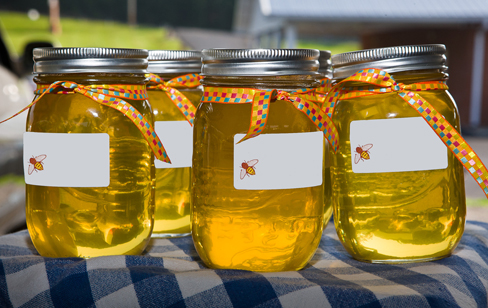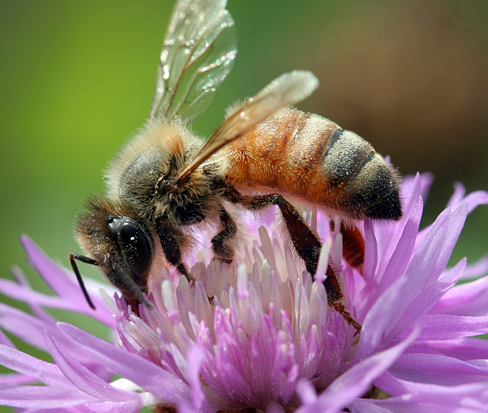Beekeeping & Honey
Apiculture, the study and maintenance of honey bees, often begins as a hobby, with beekeepers later expanding their interest into small businesses. A beekeeping enterprise can provide marketable honey and serve as a source of pollinators for nearby cultivated crops.
Marketing
 Local and specialty honey continue to maintain consumer popularity, and good marketing practices can help beekeepers establish relationships with local buyers. A beekeeper producing a quality product can easily sell out before the next season’s crop is ready. Honey produced from the nectar of certain trees, such as tulip tree, sourwood, and basswood, often brings a premium price. Market options include farmers markets, health food stores, restaurants, roadside stands, agritourism sites, and Kentucky-crafted stores or booths. Beekeepers producing large crops may consider selling honey in bulk to a honey packer.
Local and specialty honey continue to maintain consumer popularity, and good marketing practices can help beekeepers establish relationships with local buyers. A beekeeper producing a quality product can easily sell out before the next season’s crop is ready. Honey produced from the nectar of certain trees, such as tulip tree, sourwood, and basswood, often brings a premium price. Market options include farmers markets, health food stores, restaurants, roadside stands, agritourism sites, and Kentucky-crafted stores or booths. Beekeepers producing large crops may consider selling honey in bulk to a honey packer.
Production
 Ideally, hives should be located within 1 to 2 miles of a succession of spring, summer, and fall nectar sources. While previous guidelines indicated that hives need to be located in a shaded area, the latest information suggests that it is best to place them in full sunlight to help combat the small hive beetle. A source of water, such as a bird bath, should be located nearby. Avoid locations near large rivers, highways, public areas, or on hilltops. Hives should be protected against cold winter winds. Hives located near cultivated crops are potentially in danger of exposure from insecticides. Obtaining the cooperation of the grower and/or pesticide applicator will be essential to avoid bee losses.
Ideally, hives should be located within 1 to 2 miles of a succession of spring, summer, and fall nectar sources. While previous guidelines indicated that hives need to be located in a shaded area, the latest information suggests that it is best to place them in full sunlight to help combat the small hive beetle. A source of water, such as a bird bath, should be located nearby. Avoid locations near large rivers, highways, public areas, or on hilltops. Hives should be protected against cold winter winds. Hives located near cultivated crops are potentially in danger of exposure from insecticides. Obtaining the cooperation of the grower and/or pesticide applicator will be essential to avoid bee losses.
See the full crop profile and other resources below:
CCD Beekeeping and Honey Production Profile (CCD-CP-78) (pdf)
Author(s): Cheryl Kaiser & Matt Ernst
For beekeeping questions, please contact: Tammy Horn Potter, Kentucky State Apiarist (Revised 2022)

